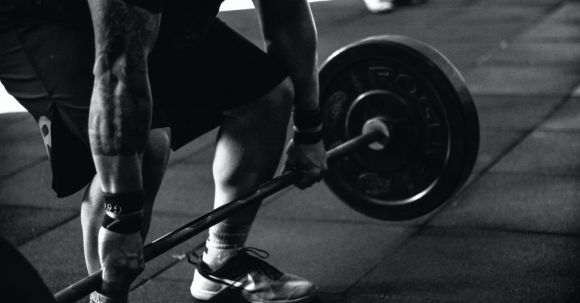When it comes to building strength and power, your legs are the foundation. Whether you're an athlete looking to improve performance or simply someone who wants to feel stronger and more confident, focusing on leg exercises is key. In this article, we will explore some of the most effective exercises for building stronger legs.
Strength training
When it comes to endurance sports such as running, cycling, or swimming, many athletes wonder if incorporating strength training into their routine is necessary. While the primary focus for these athletes is on improving cardiovascular fitness and building endurance, strength training can offer a range of benefits that can enhance performance and reduce the risk of injury. In this article, we will explore the importance of strength training for endurance athletes and why it should not be overlooked.
Improved Running Economy
One of the key benefits of strength training for endurance athletes is improved running economy. Running economy refers to how efficiently the body uses oxygen while running. By incorporating strength training exercises that target the muscles used in running, such as the glutes, hamstrings, and quadriceps, athletes can improve their overall running form and increase their stride length. This, in turn, can lead to improved performance and reduced energy expenditure during long-distance runs.Injury Prevention
Endurance training can put a significant amount of stress on the body, increasing the risk of overuse injuries. Strength training can help to counteract this by strengthening the muscles and connective tissues, making them more resistant to injury. Exercises such as squats, lunges, and deadlifts can help to improve the stability and strength of the lower body, reducing the risk of common running-related injuries such as IT band syndrome or shin splints.Increased Power and Speed
While endurance athletes may not be focused on building muscle mass, incorporating strength training into their routine can result in increased power and speed. By working on explosive movements and plyometric exercises, athletes can enhance their ability to generate force and improve their overall speed. This can be particularly beneficial during sprint finishes or when tackling challenging inclines.Enhanced Core Stability
A strong core is essential for maintaining proper running form and preventing injuries. Incorporating exercises that target the core muscles, such as planks and Russian twists, can help to improve core stability and balance. This, in turn, can improve running posture and reduce the risk of lower back pain or other postural imbalances.Mental Toughness
Endurance sports require mental toughness and resilience. Strength training can help to develop these qualities by pushing athletes out of their comfort zones and challenging them to overcome physical barriers. The discipline and determination required to complete challenging strength workouts can translate into mental toughness during endurance events, helping athletes to push through fatigue and stay focused on their goals.Finding the Right Balance
While strength training can offer numerous benefits for endurance athletes, it is important to find the right balance between endurance training and strength training. Endurance athletes should prioritize their primary sport while incorporating strength training exercises that complement their goals. Working with a qualified strength and conditioning coach can help athletes design a program that targets their specific needs and minimizes the risk of overtraining or burnout. In conclusion, strength training is indeed necessary for endurance athletes. Improved running economy, injury prevention, increased power and speed, enhanced core stability, and mental toughness are all benefits that can be gained from incorporating strength training into an endurance training routine. By finding the right balance and prioritizing their primary sport, athletes can unlock their full potential and take their performance to new heights. So, next time you lace up your running shoes or hop on your bike, don't forget to add a strength training session to your schedule. Your body will thank you.
When it comes to fitness, there has always been a debate about whether strength training or cardio should be prioritized in a workout routine. Some believe that strength training should always come first, while others argue that cardio should take precedence. So, which one is the right approach? Let's explore the benefits of each and determine which should come first in your workout routine.
The Benefits of Strength Training
Strength training involves exercises that target specific muscle groups to build strength and increase muscle mass. It typically includes exercises like weightlifting, resistance training, and bodyweight exercises. Strength training has numerous benefits, including: 1. Increased muscle mass: Strength training helps to build lean muscle mass, which not only improves your physical appearance but also boosts your metabolism, enabling you to burn more calories even at rest. 2. Improved bone density: Regular strength training can increase bone density and reduce the risk of osteoporosis, a condition characterized by weakened bones. 3. Enhanced functional fitness: Strength training improves your ability to perform everyday activities, such as lifting heavy objects, climbing stairs, or carrying groceries. 4. Injury prevention: Strong muscles provide better support and stability for your joints, reducing the risk of injuries during physical activities.The Benefits of Cardiovascular Exercise
Cardiovascular exercise, also known as cardio, is any activity that elevates your heart rate and increases your breathing rate. It includes exercises like running, cycling, swimming, and brisk walking. Cardio has numerous benefits, including: 1. Improved cardiovascular health: Regular cardio exercise strengthens your heart, increases lung capacity, and improves blood circulation, reducing the risk of heart disease and other cardiovascular conditions. 2. Weight loss and calorie burn: Cardio is an effective way to burn calories and lose weight, making it an essential component of any weight loss program. 3. Increased endurance and stamina: Regular cardio exercise improves your endurance and stamina, allowing you to perform physical activities for longer periods without feeling fatigued. 4. Stress relief: Cardiovascular exercise releases endorphins, which are known as "feel-good" hormones, helping to reduce stress, anxiety, and improve overall mood.So, Which Comes First?
Now that we understand the benefits of both strength training and cardio, the question remains: which should come first in your workout routine? The answer depends on your fitness goals and individual preferences. Here are a few factors to consider: 1. Primary fitness goal: If your primary goal is to build strength and increase muscle mass, it is generally recommended to prioritize strength training. Starting with strength training allows you to give your muscles the maximum energy and focus required for heavy lifting. 2. Time constraints: If you have limited time for your workouts, it may be more beneficial to prioritize whichever component of your routine is most important to you. Both strength training and cardio are essential for overall fitness, so finding a balance that works for you is key. 3. Personal preference: Some individuals simply enjoy one type of exercise more than the other. If you find that you are more motivated and engaged during cardio sessions, starting with cardio may help you stay consistent and committed to your fitness routine.In Conclusion
Strength training and cardio each have their unique benefits, and the order in which you perform them depends on your specific fitness goals and preferences. Prioritizing strength training can be beneficial if building muscle and increasing strength is your primary goal. On the other hand, starting with cardio may be more suitable if you enjoy it more or if weight loss is your main objective. Ultimately, finding a balance between the two is crucial for achieving optimal fitness results. So, whether you choose strength training first or cardio first, what matters most is staying consistent and making physical activity a regular part of your lifestyle.
The bench press is one of the most popular exercises in the gym, and for good reason. It is a compound movement that targets multiple muscle groups, including the chest, shoulders, and triceps. If you want to increase your bench press, there are several strategies you can implement to maximize your strength and power. In this article, we will explore some effective techniques that can help you improve your bench press performance.
Perfect Your Form
Before you start adding weight to the bar, it is crucial to ensure that your form is correct. Proper form not only reduces the risk of injury but also allows you to lift more weight efficiently. To perform a bench press with proper form, lie flat on the bench with your feet firmly planted on the ground. Maintain a tight grip on the bar, with your hands slightly wider than shoulder-width apart. Lower the bar slowly to your chest, keeping your elbows tucked in at a 45-degree angle. Push the bar up explosively, using your chest and triceps to complete the lift.Focus on Progressive Overload
Progressive overload is the key to building strength and muscle mass. To increase your bench press, you need to continually challenge your muscles by gradually increasing the weight you lift over time. Start by adding small increments of weight to the bar each week, aiming for gradual progress. This constant overload forces your muscles to adapt and grow stronger, resulting in increased bench press strength.Incorporate Variations
To break through plateaus and stimulate new muscle growth, it is essential to incorporate variations into your bench press routine. Variations such as incline bench press, close grip bench press, and dumbbell bench press target different angles and muscle groups, helping to develop balanced strength and prevent muscle imbalances. By incorporating variations into your training, you can also avoid mental boredom and keep your workouts fresh and exciting.Train for Power
Increasing power is crucial for improving your bench press. Power is the ability to generate force quickly, which is essential for explosive movements like the bench press. To train for power, incorporate exercises such as plyometrics, medicine ball throws, and speed bench press into your routine. By training explosive power, you can improve your ability to generate force rapidly, ultimately leading to a stronger bench press.Strengthen Your Supporting Muscles
While the bench press primarily targets the chest, shoulders, and triceps, it is also important to strengthen the supporting muscles to improve your overall bench press performance. Weaknesses in muscles such as the upper back, lats, and core can limit your ability to lift heavier weights. Incorporate exercises like rows, pull-ups, and planks into your training to strengthen these muscles and enhance your bench press strength.Optimize Your Nutrition and Recovery
Proper nutrition and recovery play a vital role in increasing your bench press. To optimize your performance, ensure that you are consuming enough protein and calories to support muscle growth and repair. Aim for a balanced diet that includes lean protein sources, complex carbohydrates, and healthy fats. Additionally, prioritize quality sleep and rest days to allow your muscles to recover and adapt to the stress of training.Track Your Progress
Finally, to effectively increase your bench press, it is essential to track your progress. Keep a training journal to record the weight, sets, and reps of each bench press session. This allows you to monitor your progress and make necessary adjustments to your training program. By tracking your progress, you can identify patterns, set realistic goals, and stay motivated on your journey to a stronger bench press. In conclusion, increasing your bench press requires a combination of proper form, progressive overload, variation, power training, strengthening supporting muscles, optimizing nutrition and recovery, and tracking your progress. Implementing these strategies into your training routine will help you break through plateaus and achieve new levels of strength. Remember, consistency and patience are key. Keep pushing yourself, and soon you'll see your bench press numbers skyrocket.
Running is a popular form of exercise that offers numerous health benefits. It helps in weight management, improves cardiovascular fitness, and boosts mental well-being. However, many runners often overlook the importance of strength training in their fitness routine. While running itself is an excellent form of exercise, incorporating strength training exercises can greatly enhance performance and reduce the risk of injury. In this article, we will explore why strength training is essential for runners and how it can take their running to the next level.
Improved Running Efficiency
When we think of running, we often focus on the cardiovascular aspect of it. However, running is a whole-body exercise that requires the coordination and activation of various muscle groups. Strength training helps to develop these muscles, making them stronger and more efficient. By incorporating exercises that target the core, legs, and upper body, runners can improve their overall running form and efficiency. This, in turn, can lead to better running economy and increased running speed.Injury Prevention
One of the most significant benefits of strength training for runners is injury prevention. Running puts a lot of stress on the muscles, joints, and connective tissues, increasing the risk of overuse injuries. By incorporating strength training exercises that target the muscles used in running, such as the quadriceps, hamstrings, calves, and glutes, runners can build strength and stability around these areas. Strong muscles act as shock absorbers, reducing the impact on the joints and minimizing the risk of injuries such as shin splints, IT band syndrome, and stress fractures.Enhanced Power and Speed
Strength training exercises, such as plyometrics and resistance training, can improve power and speed in runners. Plyometric exercises, such as box jumps and bounding, help to develop explosive power, which translates into faster running times. Resistance training, on the other hand, helps to build muscle strength, enabling runners to generate more force with each stride. By incorporating these types of exercises into their training routine, runners can improve their overall performance and achieve faster race times.Increased Endurance
Endurance is a crucial component of running, especially for long-distance runners. Strength training can help improve muscular endurance, allowing runners to maintain their pace over longer distances. By incorporating exercises that target the slow-twitch muscle fibers, such as high-repetition, low-weight exercises, runners can improve their ability to sustain a steady pace without fatiguing quickly. This can be particularly beneficial for marathoners and ultra-runners who need to maintain a consistent pace for extended periods.Balanced Body and Injury Rehabilitation
Running is a repetitive movement that can lead to muscle imbalances, particularly in the lower body. Strength training can help correct these imbalances by targeting weaker muscle groups. Additionally, strength training can also aid in injury rehabilitation by focusing on the specific muscles and areas affected by the injury. By incorporating exercises that strengthen and stabilize these areas, runners can recover faster and reduce the likelihood of re-injury.Conclusion: Take Your Running to the Next Level
While running is an excellent form of exercise, incorporating strength training into your routine can have numerous benefits. From improved running efficiency and injury prevention to enhanced power, speed, and endurance, strength training can help take your running to the next level. Whether you are a casual jogger or a competitive athlete, adding strength training exercises that target the muscles used in running can greatly improve your overall performance and reduce the risk of injury. So, lace up your running shoes and hit the gym to reap the benefits of strength training for runners.
Strength training is a vital component of any fitness routine. Whether you're looking to build muscle, increase strength, or improve overall health, incorporating strength training into your weekly schedule is essential. But how often should you strength train? This article will explore the recommended frequency for strength training and provide some helpful tips to ensure you're getting the most out of your workouts.
1. Understanding the Importance of Recovery
Before we dive into the frequency of strength training, it's crucial to understand the importance of recovery. When you strength train, you're essentially breaking down muscle fibers, which then rebuild stronger during the recovery process. Without adequate rest and recovery, your muscles won't have the opportunity to repair and grow, potentially leading to overtraining and injury. Therefore, finding the right balance between training and rest is key.2. Beginners: Start Slow and Steady
If you're new to strength training, it's recommended to start with two to three sessions per week. This frequency allows your body to adapt to the new stimulus and gradually build strength without overwhelming your muscles. As a beginner, focus on learning proper form and technique for various exercises before increasing the frequency or intensity of your workouts.3. Intermediate: Aim for Three to Four Sessions per Week
Once you've established a solid foundation and feel comfortable with the basics, you can increase your strength training frequency to three to four sessions per week. This frequency allows for more targeted muscle development and increased strength gains. Remember to include rest days in between workouts to allow your muscles to recover and grow.4. Advanced: Pushing the Limits
For those with more advanced fitness levels, aiming for four to six strength training sessions per week can be appropriate. However, it's essential to listen to your body and pay attention to any signs of overtraining. If you find yourself constantly fatigued, experiencing decreased performance, or dealing with nagging injuries, it may be a sign that you need to dial back your training frequency or intensity.5. Balancing Strength Training with Other Forms of Exercise
While strength training is crucial, it's essential to strike a balance between strength training and other forms of exercise. Incorporating cardiovascular exercise, such as running or cycling, can help improve cardiovascular health and overall endurance. Additionally, including flexibility and mobility exercises, such as yoga or Pilates, can enhance joint range of motion and prevent injuries.6. Tailoring Frequency to Your Goals
The frequency of your strength training can also depend on your specific goals. If your primary focus is building muscle and increasing strength, you may choose to prioritize strength training by increasing the frequency to five or six sessions per week. On the other hand, if you're looking to maintain general fitness and overall health, three to four sessions per week may be sufficient.7. Adjusting Frequency Based on Recovery
Lastly, it's crucial to listen to your body and adjust your training frequency based on your recovery. Factors such as sleep quality, stress levels, and overall lifestyle can impact your body's ability to recover. If you find yourself consistently feeling fatigued or experiencing prolonged muscle soreness, it may be a sign that you need to reduce your training frequency and allow for more recovery time. In conclusion, the frequency of strength training depends on several factors, including your fitness level, goals, and recovery capacity. Beginners should start with two to three sessions per week and gradually increase as they progress. Intermediate and advanced individuals can aim for three to four and four to six sessions per week, respectively. However, it's crucial to strike a balance between strength training and other forms of exercise, and to listen to your body to ensure adequate recovery. By finding the right frequency for your individual needs, you can maximize the benefits of strength training and achieve your fitness goals.
In today's fast-paced world, finding time to exercise can be a challenge, especially for busy professionals. However, incorporating strength training into your routine is essential for maintaining overall health and well-being. In this article, we will discuss some practical tips and tricks to help busy professionals incorporate strength training into their busy schedules.
1. Prioritize your workouts
One of the most important aspects of incorporating strength training into your routine is to prioritize your workouts. Make a commitment to yourself and treat your workouts as important appointments. Schedule them in your calendar and stick to them as you would any other work-related commitment. By making your workouts a priority, you are more likely to find time for them in your busy schedule.2. Opt for shorter, high-intensity workouts
When time is limited, opting for shorter, high-intensity workouts can be a game-changer. Instead of spending hours at the gym, focus on exercises that target multiple muscle groups simultaneously. Compound exercises such as squats, deadlifts, and push-ups are great options. These exercises not only save time but also provide a full-body workout, making them ideal for busy professionals.3. Incorporate strength training into your daily routine
Finding time for a dedicated workout session can be challenging for busy professionals. However, you can still incorporate strength training into your daily routine by making small adjustments. For example, instead of taking the elevator, opt for the stairs. Use resistance bands or dumbbells while watching TV or during work breaks. These small adjustments can add up and help you sneak in some strength training throughout the day.4. Make the most of your lunch breaks
Lunch breaks are an excellent opportunity to fit in a quick workout. Consider going for a brisk walk or jog during your lunch break. You can also find a nearby gym or fitness studio and squeeze in a short strength training session. Making the most of your lunch breaks not only helps you stay active but also boosts your energy levels for the rest of the day.5. Utilize technology
Technology can be a great tool for busy professionals looking to incorporate strength training into their routines. There are numerous fitness apps and online workout programs available that offer quick and effective strength training workouts. These apps and programs often provide guided workouts, tracking features, and can be accessed anytime, anywhere. Utilize technology to your advantage and find a fitness app or online program that suits your needs and schedule.6. Find an accountability partner
Having an accountability partner can significantly increase your chances of sticking to your strength training routine. Find a colleague, friend, or family member who shares similar fitness goals and schedules. Plan your workouts together, hold each other accountable, and provide support and motivation along the way. Having an accountability partner not only makes your workouts more enjoyable but also increases your commitment to regular strength training. In conclusion, Incorporating strength training into your busy schedule may seem challenging, but with the right strategies, it is achievable. Prioritize your workouts, opt for shorter, high-intensity sessions, and make use of technology to maximize your time. Find small ways to incorporate strength training into your daily routine and make the most of your lunch breaks. Lastly, find an accountability partner to keep you motivated and on track. With these tips and tricks, busy professionals can develop a sustainable strength training routine that fits seamlessly into their busy lives.
When it comes to fitness goals, everyone has their own preferences and desires. Some people strive to build lean, sculpted muscles, while others simply want to gain strength without adding bulk. If you fall into the latter category, you may be wondering how to achieve this balance. In this article, we will explore the best strategies to get stronger without getting bulky.
Focus on Compound Exercises
Compound exercises are movements that engage multiple muscle groups at the same time. These exercises are highly effective for building strength without adding excessive muscle mass. By incorporating compound movements into your workout routine, you can target a wide range of muscles while maximizing your strength gains. Some examples of compound exercises include squats, deadlifts, bench presses, and pull-ups. These exercises recruit several muscle groups, allowing you to build functional strength without excessive hypertrophy. Aim to include compound exercises in your workout routine two to three times per week.Lift Heavy, but with Fewer Repetitions
To get stronger without getting bulky, it is important to lift heavy weights. However, instead of performing high repetitions, focus on lower rep ranges with heavier weights. This approach stimulates the nervous system and promotes strength gains without significant muscle growth. Aim for three to five sets of three to six repetitions with a weight that challenges you. This intensity will help you build strength and improve your overall performance without adding bulk.Prioritize Progressive Overload
Progressive overload is a key principle in strength training. It involves gradually increasing the demands placed on your muscles over time. By consistently challenging your muscles with heavier weights or more repetitions, you stimulate further strength adaptations. To apply progressive overload, start with a weight that allows you to perform the desired number of repetitions with good form. As you become stronger, gradually increase the weight or the number of repetitions. This gradual progression will help you get stronger without packing on excess muscle mass.Incorporate Plyometrics and Explosive Movements
Plyometric exercises and explosive movements are excellent additions to any strength training routine. These exercises involve rapid and powerful muscle contractions, which improve muscular power and speed without significant hypertrophy. Exercises such as box jumps, medicine ball throws, and kettlebell swings are great options for incorporating plyometrics and explosive movements into your workouts. These exercises engage your fast-twitch muscle fibers, which are responsible for explosive movements and overall strength.Implement High-Intensity Interval Training (HIIT)
High-Intensity Interval Training (HIIT) is a training method that alternates between short bursts of intense exercise and brief recovery periods. HIIT workouts are efficient and effective for improving cardiovascular fitness and building strength without excessive muscle growth. By combining strength exercises with cardiovascular intervals, you can create a HIIT workout that targets both strength and endurance. This approach helps you develop lean muscle while burning calories and improving your cardiovascular health.Conclusion: Striking the Right Balance
Achieving strength gains without adding bulk is possible with the right approach. By focusing on compound exercises, lifting heavy weights with fewer repetitions, prioritizing progressive overload, incorporating plyometrics and explosive movements, and implementing HIIT workouts, you can get stronger without getting bulky. Remember to listen to your body, challenge yourself, and stay consistent with your training regimen. With dedication and the right strategies, you can achieve your strength goals while maintaining a lean and toned physique.
Strength training is a great way to improve your overall fitness and build strength and muscle. However, if you're new to strength training, it can be a bit overwhelming. With all the different exercises and techniques, where do you even start? Don't worry, we've got you covered. Here are 5 essential strength training tips for beginners to help you get started on your fitness journey.
1. Start with the basics
When you're just starting out with strength training, it's important to focus on the basics. This means incorporating compound exercises into your routine. Compound exercises are exercises that work multiple muscle groups at once, such as squats, deadlifts, and bench presses. These exercises are great for building overall strength and are essential for beginners.2. Master your form
One of the most important things to remember when strength training is to always prioritize your form. Proper form not only ensures that you're targeting the right muscles, but it also helps prevent injuries. Take the time to learn the proper form for each exercise and start with lighter weights until you feel comfortable with your technique. Don't be afraid to ask for help or hire a personal trainer to guide you through the proper form.3. Gradually increase the weight
As you become more comfortable with your workouts, it's important to gradually increase the weight you're lifting. This progressive overload is what helps you continue to build strength and muscle over time. Start with lighter weights and slowly increase the weight as you feel stronger and more confident. Just remember to always listen to your body and never push yourself too hard.4. Rest and recover
Rest and recovery are just as important as the actual workouts themselves. When you strength train, you're essentially breaking down your muscle fibers. It's during the rest and recovery period that your muscles repair and grow stronger. Make sure to incorporate rest days into your routine and prioritize sleep and proper nutrition to help support your recovery.5. Stay consistent
Consistency is key when it comes to strength training. It's not about doing one intense workout and then taking a week off. It's about consistently showing up and putting in the work. Aim for at least 2-3 strength training sessions per week and stick to a schedule that works for you. Remember, progress takes time and patience, so stay consistent and trust the process. In conclusion, Strength training can be intimidating for beginners, but with these 5 essential tips, you'll be on your way to building strength and achieving your fitness goals. Remember to start with the basics, master your form, gradually increase the weight, prioritize rest and recovery, and stay consistent. Strength training is a journey, and with consistency and dedication, you'll be amazed at what you can achieve. So grab those weights, embrace the challenge, and enjoy the process of becoming stronger and healthier.
Strength training has long been associated with men and bodybuilders. However, in recent years, more and more women have started to embrace this form of exercise. Unfortunately, along with the growing popularity, many myths and misconceptions have also emerged. In this article, we will debunk these myths and uncover the facts about strength training for women.
Myth: Women will become bulky and masculine by lifting weights.
Fact: One of the most common fears among women is that lifting weights will make them look bulky and masculine. However, this is far from the truth. Women have significantly lower levels of testosterone compared to men, which is the hormone responsible for muscle growth. Strength training actually helps women develop lean and toned muscles, enhancing their overall physique.
Myth: Cardio is more effective for weight loss than strength training.
Fact: While cardio exercises are great for burning calories during the workout, strength training has long-term benefits for weight loss. When you engage in strength training, you build lean muscle mass. This muscle tissue helps to increase your metabolism, allowing you to burn more calories throughout the day, even at rest. Additionally, strength training helps to improve body composition by reducing body fat percentage and increasing muscle mass.
Myth: Strength training is dangerous for women, leading to injuries.
Fact: Like any form of exercise, strength training carries some risks if not performed correctly. However, with proper guidance and technique, strength training is safe for women. In fact, it can help improve bone density, reducing the risk of osteoporosis. It is essential to start with lighter weights and gradually increase the load as you gain strength and confidence. Consulting with a certified trainer can also ensure that you are using correct form and technique.
Myth: Women should stick to light weights and high repetitions.
Fact: Many women believe that lifting heavy weights will make them bulky, so they opt for light weights and high repetitions. However, this belief is not entirely accurate. To see significant strength gains and muscle development, it is essential to challenge your muscles with heavier weights. Women can lift weights just as heavy as men, and it will not result in excessive muscle growth. It is the intensity and progressive overload that leads to improvements in strength and muscle tone.
Myth: Strength training is only for the young.
Fact: Another common misconception is that strength training is only beneficial for younger women. However, strength training is beneficial for women of all ages. As we age, we naturally lose muscle mass, which can lead to decreased strength and mobility. Strength training helps to preserve and build muscle, making it particularly important for older women. It can also improve balance and reduce the risk of falls and fractures.
In conclusion, strength training is a highly effective and beneficial form of exercise for women. It does not make women bulky or masculine, but rather helps them develop lean and toned muscles. Strength training is safe when performed correctly and can help with weight loss, bone density, and overall strength and mobility. By debunking these myths and embracing the facts, women can confidently incorporate strength training into their fitness routines and reap the numerous benefits it offers.









